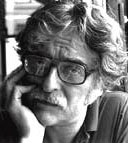 |
→ November 2005 Contents → Column
|
Nuts & Bolts:
Yet Another Rant |
 |
|
This is probably a pretty good column for a month in which I find I have absolutely nothing to say.
I recently read that conventional newspaper readership was diminishing, news on the Internet and its readership was growing, but the 600-pound gorilla was TV news, whose audience far outnumbered print and Web. In the same publication I read that much of TV's success may be due to the fact that its images move. It was hypothesized that in the early days of our development this was a survival trait. Cave people who paid attention to movement were less likely to be eaten by sabre-tooth tigers. Thus, television becomes the 600-pound gorilla or the 600-pound sabre-tooth tiger of the news world just because the images move.
A long time ago, a group of folks at Harvard were helping to develop the television program "Sesame Street" as a learning tool for young children. They wanted to be able to study a group of children who had never seen TV. On top of a mountain in Jamaica they found a group of educated children who had grown up in an area with no TV reception. A group of folks, myself included, took a bunch of small four-wheel-drive vehicles loaded with TV monitors and VCRs and drove them to the top of the mountain. We set up one of the monitors and showed the villagers scenes from "Sesame Street," specifically, scenes with the Muppets, Bert and Ernie.
When the images appeared on the screen, the folks from the village screamed and ran away. Over the next 30 minutes most of them came back; they quickly and completely adjusted to life with television and dubbed the new medium "Monkeys in a Box."
Television news -- monkeys in a box? Sometimes. And sometimes print media is monkeys on word processors. But, for the most part, TV is headlines in a box. Walter Cronkite, at the time he was the CBS anchor, pointed out that for a more complete coverage of important events we should be reading newspapers and newsmagazines.
But newspapers are having hard times. I see announcements that fairly sizable numbers of employees are being let go. I don't have a lot of sympathy for the publishers because of the bad way they have treated freelance photographers. When an old person like me can see the younger photographers who followed him being paid less even though their expenses are higher, getting little in the way of insurance or medical benefits even when they are covering events that put them at risk, and giving away all rights in order to survive in the short term, I don't lose sleep when the publisher's empire is diminished. I do lose sleep when his paper is diminished.
And isn't it strange that the position of the photographer is diminished just as many papers seem to be discovering that pictures, good pictures, well displayed and often in large sizes, help the paper? As much as some editors would disagree, they don't help the paper by attracting customers that can't read, i.e., dumbing down the paper. They pass on information in a different way than text: "That's a brave soldier. That's a horrible death. That's a beautiful child. That's a really ugly situation. That's a really cute puppy dog." OOPS, adjectives. They have no place in the news. Are you kidding? Do you think a reader doesn't read about a war or a government policy and not toss a few adjectives into his description of the text? Editors sometimes think that because the writer doesn't assign adjectives with strong values to a text, the reader doesn't. Reading the news shouldn't be an arid experience. Photographing and reporting it certainly aren't.
It would be nice if news photography were more effective on the Web, a growing arena for still news photography. Unfortunately, it often is limited to small images compressed to the point that they truly look like they were used to wrap fish. My hope is that as high-speed lines become more common, journalistic Web sites will afford the option of larger, relatively high-resolution images.
When I get up in the morning, almost the first thing I do is go to the computer and log onto my e-mail. Invariably, some friend has e-mailed a high-quality, reasonably-sized jpeg. Then I log onto a few news sites and see small, often badly reproduced, images. With a little work those Web sites could be a big part of the future photojournalism. Without it, they could be eaten by the sabre-tooth tiger.
© Bill Pierce
Contributing Writer
|
|
Back to November 2005 Contents
|
|